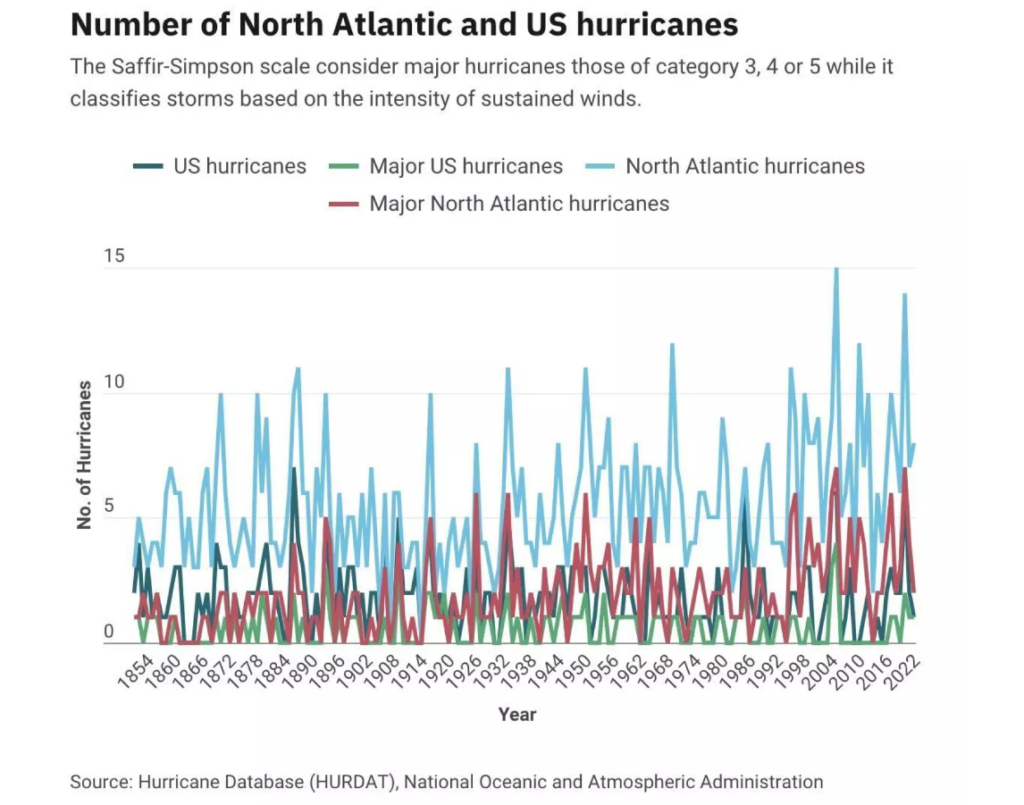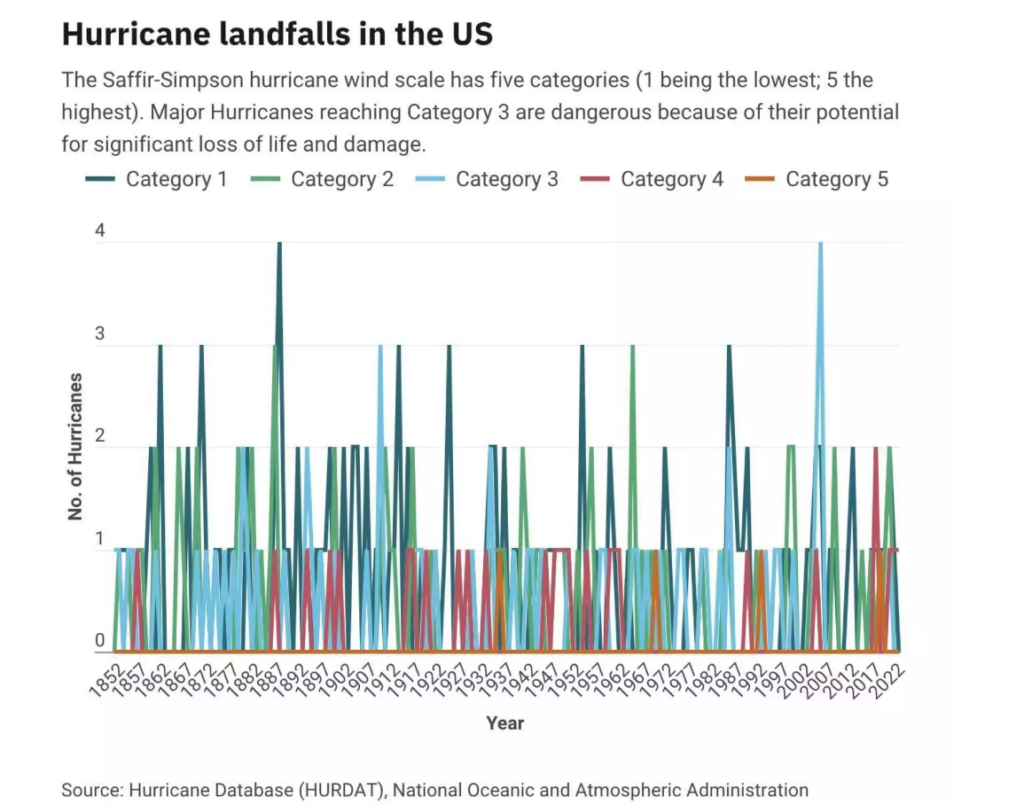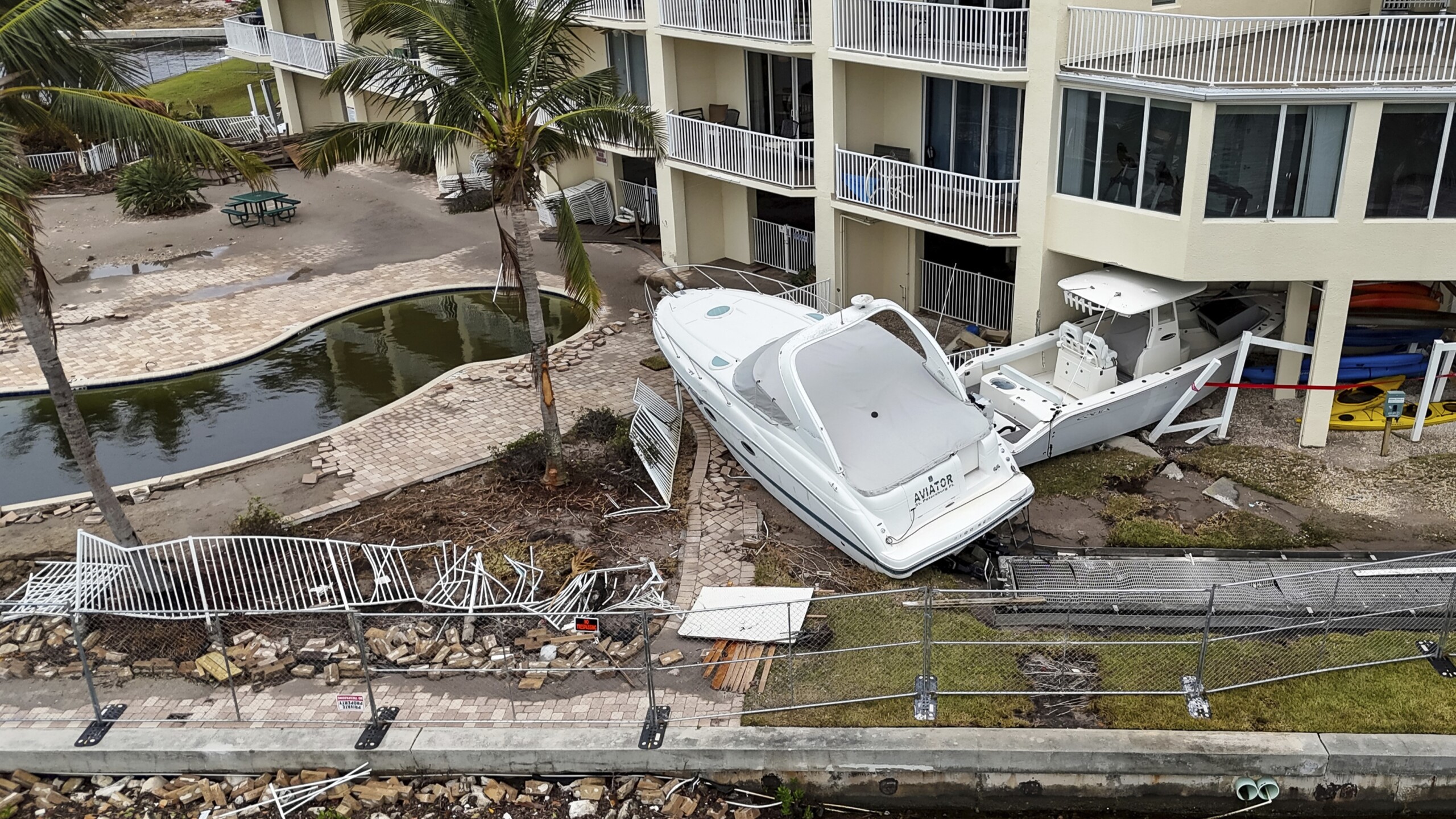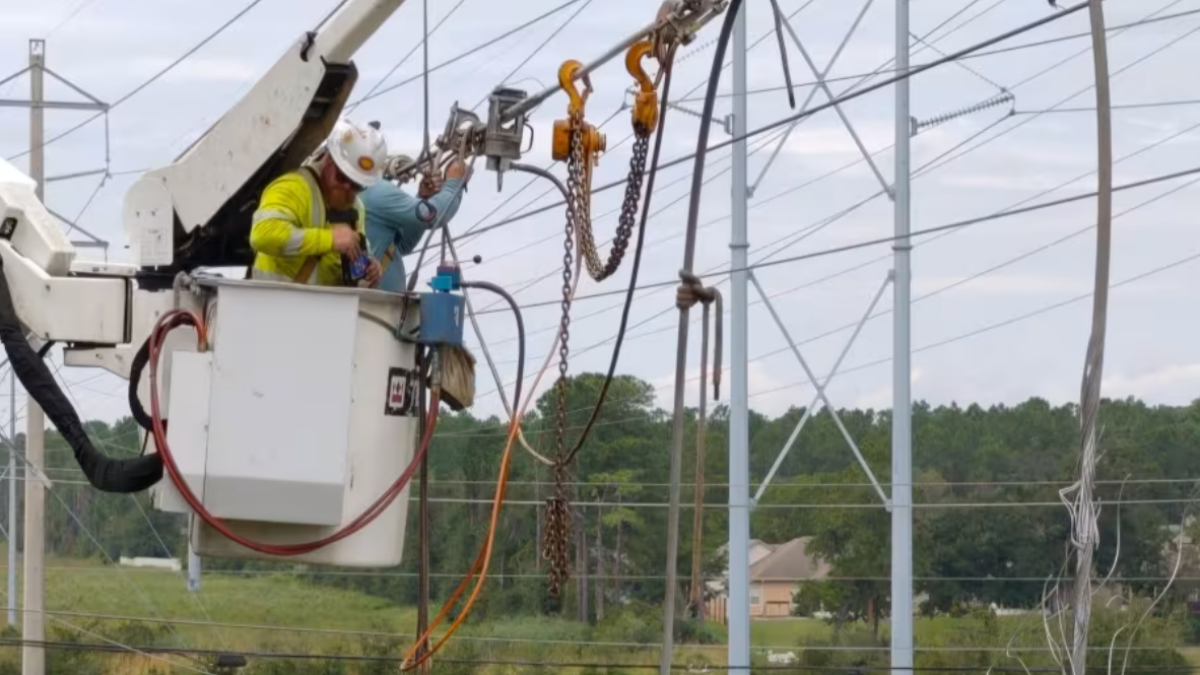After three years of hurricanes barreling up the Gulf of Mexico, battered residents may feel they are living in a new Florida Hurricane Alley.
But while living with recent storms has been frustrating and heartbreaking for many, the experts say there have not been any real changes in hurricane geographic patterns.
“They are not behaving any different than (they were) 10 or 20 years ago,” said David Nolan, University of Miami professor and hurricane expert.
Other experts agree.
“There really haven’t been major hurricanes in recent history that have hit east of Apalachicola closer to the shore just off of Tallahassee,” said Stephen Mullens, assistant professor of meteorology at the University of Florida.
Decades ago, the Florida Peninsula and South Florida were notorious for having very strong hurricanes, he said. “I think it might be like the ’60s or ’70s when the Miami to West Palm Beach area got a lot of very powerful hurricanes,” Mullens said.
Mullens said there is not much of a difference between hurricanes in the last five years versus those in the 10 years prior.
“Although we’ve had a couple of storms (in North Florida), this would be the third storm in two years that hit this area. I would disagree with the idea that storms haven’t been occurring here in the past,” UF’s Mullens said.
Stronger hurricanes
However, the nature of hurricanes is certainly changing.
A National Oceanic and Atmospheric Administration study concluded in 2021 that tropical cyclone rainfall will increase because of climate change and global warming leading to more flooding.
The study also found an increase over the past four decades in the intensity of tropical cyclones that have reached at least Category 3 through Category 5, globally and in the Atlantic basin, including the North Atlantic Ocean, the Caribbean Sea and the Gulf of Mexico.
Cyclones of Category 1 through Category 3 are not as frequent as they once were, according to the NOAA study.

While the experts said the general path of hurricanes has not changed, there has been an upward trend in the number of hurricanes in the last 40 years. The typical number of storms 20 years ago was an average of 12 every year. Today, it is 14.
More hurricanes cause a greater number of major rainfall events associated with the storms, as in the case of hurricanes Harvey in 2017 and Florence in 2018, Nolan said.
The waters in the Western Atlantic around Florida, the Gulf of Mexico and the Caribbean Sea are warm, which allows the formation of hurricanes. So, for meteorologists, it is not unusual to see hurricanes in these areas.
The coastline has not changed, according to Nolan. However, people’s perspectives on these natural events has.
In 2005, when Hurricane Katrina caused massive flooding in New Orleans and cities along the coastline east of Louisiana, Mississippi and Alabama, area residents did not think flooding could happen. Then, in 2017, Hurricane Harvey also caused the same damage.
“Those hurricanes I just mentioned were significant in that way,” Nolan said.

On average, South Florida has the highest frequency of hits by tropical storms and hurricanes than the rest of the state. The area west of the Panhandle also has a very high rate of storms. Cities are more vulnerable depending on their geographic shape and how close they are to the water and the coastline.
Whatever the experts may say about the pathways of storms, Floridians know they and their neighbors are suffering.
Personal stories
Carlos Salgado, a Gainesville small business owner, said dealing with hurricanes is nothing new for him. He is originally from Nicaragua, which is situated in Central America and borders on the west with the Pacific Ocean and with the Caribbean Sea on its eastern coast.
Nicaragua has been hit by major hurricanes, including Hurricane Mitch in 1998, Hurricane Beta in 2005, Hurricane Felix in 2007 and most recently Hurricane Eta and Hurricane Iota in 2020.
“We’re trying to stay at home, taking care of our family and having enough food to avoid going outside,” said Salgado, 31, referring to Hurricane Helene.
He opened his Nicaraguan food business in the Bella Vista Village apartments in Gainesville in June and has earned income to provide for his wife and two children.
The decision to temporarily close due to the hurricane means he will lose $2,000 in daily revenue from his business, he said.
Tropical storms that tend to form in the Caribbean Sea or in the Gulf of Mexico heading straight north are the ones that affect the upper parts of Florida, according to Corene Matyas, a geography professor and tropical climatology researcher at the University of Florida.
These areas have warm waters, absence of strong winds in the troposphere and help storms to rotate, conditions that are not frequently found in other parts of the world, they described.
“Tropical cyclones are kind of like a bubble of heat. If you blow strong winds against the bubble, you’re gonna blow it apart. It’s not gonna be able to form. So, it has to be in near weak winds as well,” Matyas said.
Steph Ryan, a checkout associate at Walmart, said hurricanes are part of being a Floridian.
“I’m from South Florida, so I know how to deal with hurricanes,” Ryan, 21, said.
When he was 3 years old, Hurricane Wilma hit Palm Beach County as a Category 3 in 2005 and caused the roof of his house in Lake Worth to fall on his head, leaving him with a scar.
Ryan recalled witnessing several storms growing up: Tropical Storm Emily in 2012, Hurricane Matthew in 2016, Irma in 2017 and Dorian in 2019.
He said he has noticed a decrease in hurricanes in the past few years until Hurricane Irma hit Naples in 2017.
“I remember those couple of years, it was quite active because we hadn’t had a real storm in many years,” Ryan said. “As the climate gets worse, we’re seeing these storms get worse. Hurricane Dorian was one of the most powerful storms, which is quite scary.”
The massive Helene
In the last two years, Hurricanes Idalia and Debby were smaller than Hurricane Helene.
Helene was a unique major hurricane due to the tropical storm-force winds that extended much further away from the center toward the Florida peninsula, UF’s Mullens said.
Climate change has increased the sea surface temperature and the amount of water vapor in the air. Storms are likely to be more powerful and produce more rain, he said. Inland rainfall is the number one driver of fatalities with hurricanes, he added.
During this time of year, ocean temperatures are the warmest and the atmospheric wind flow is the most conducive for creating major hurricanes not only in the Atlantic basin but in the Gulf of Mexico, the Caribbean Sea, the tropical Atlantic and east of the Lesser Antilles Islands, according to UF’s Mullens.
“There’s really not anything specific that makes one particular area more likely to get a major hurricane than another,” Mullens said.
Copyright 2024 WUFT 89.1






